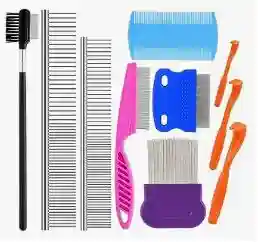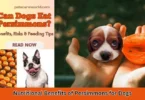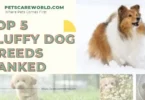Welcome to our comprehensive guide on dog grooming! As passionate dog lovers and seasoned professionals in the field, we understand the importance of proper grooming for your furry friend’s overall health and well-being. In this article, we will delve into the nitty-gritty of dog grooming, sharing expert tips and techniques that will not only help you maintain your canine companion’s appearance.
Dog Grooming, provides you with expert insights, practical techniques, and valuable tips to perfect your grooming routine. Whether you’re a seasoned pet parent or a new dog owner. Our mission is to empower you with the knowledge you need to become a grooming guru and nurture a bond of love and care with your furry companion.
From brushing techniques that enhance your dog’s coat to the do’s and don’ts of bathing, nail trimming, and caring for their eyes and ears, we’ve got you covered. We understand that shedding can be a challenge, so we’ve included effective strategies to manage it. Our goal is to equip you with the tools and techniques to make Dog Grooming a rewarding experience for both you and your pet.
With a focus on promoting your dog’s overall well-being, our guide emphasizes the importance of regular grooming not only for aesthetic purposes but also for maintaining optimal health. We’ll address common concerns, offer step-by-step instructions, and provide practical insights to ensure that your grooming sessions are enjoyable and stress-free.
Whether you have a curious pup, an energetic adolescent, or a seasoned senior dog, our guide is tailored to cater to dogs of all ages, sizes, and breeds. So, let’s embark on this journey of Mastering Dog Grooming together, as we delve into the world of care, comfort, and connection, ensuring that your beloved furry friend thrives in a world of proper grooming and tender love.
Understanding the Importance of Regular Dog Grooming
Dog grooming is far more than just a cosmetic endeavor. It plays a pivotal role in maintaining your pet’s health and happiness. Regular grooming sessions allow you to inspect your dog’s skin, coat, eyes, ears, and paws for any signs of health issues. Additionally, grooming provides an excellent opportunity to bond with your furry friend and reinforce positive behavior.
Dog Grooming: Brushing Techniques for a Luscious Coat
A well-groomed coat is not only aesthetically pleasing but also an indicator of a dog’s overall health. Different breeds have unique coat types. Understanding the right brushing techniques for your dog is vital. For long-haired breeds, a pin brush is ideal to prevent tangles and matting, while short-haired breeds benefit from a slicker brush to remove loose fur efficiently.

- Select the Right Brush: Different breeds have varying coat types. Choose a brush that suits your dog’s specific coat to achieve optimal results. Common brush types include pin brushes, slicker brushes, and bristle brushes.
- Frequency Matters: Regular brushing is key. Short-haired dogs may require brushing once a week, while long-haired breeds may need daily sessions to prevent tangles and matting.
- Start Early: Introduce brushing to your dog from a young age to accustom them to the process. This creates a positive association and reduces resistance.
- Untangle Knots Gently: Begin at the tips of the fur and work your way towards the skin. If you encounter knots or tangles, hold the fur close to the skin while gently working them out with the brush.
- Use Gentle Strokes: Brush in the direction of hair growth using gentle and even strokes. Apply minimal pressure to avoid discomfort or skin irritation.
- Tailored Technique: Adjust your brushing technique to your dog’s coat type. For example, use a pin brush for longer coats and a slicker brush for removing loose fur and preventing matting in shorter coats.
- Focus on Problem Areas: Pay extra attention to areas prone to tangling, such as behind the ears, under the collar, and around the legs and tail.
- Monitor Skin Health: Brushing allows you to monitor your dog’s skin condition. Look for signs of irritation, redness, or unusual lumps as you groom.
- Provide Treats and Praise: Make brushing a positive experience by rewarding your dog with treats and praise. This reinforces good behavior and makes grooming sessions enjoyable.
- Regular Baths: While not a substitute for brushing, regular baths can help maintain a clean and healthy coat. Use a dog-specific shampoo and conditioner that suits your dog’s skin type.
- Consult a Professional: If you’re unsure about the right brushing technique for your dog’s specific coat or encounter stubborn tangles, consider seeking guidance from a professional groomer.
- Stay Consistent: Consistency is key. Establish a grooming routine that includes regular brushing sessions to ensure your dog’s coat remains luscious and healthy.
Brushing is not only about maintaining a beautiful coat, but it’s also an opportunity to bond with your furry friend. It promotes their overall well-being.
Dog Grooming – Dog Bathing: The Do’s and Don’ts
Bathing your dog is a vital part of your dog grooming routine. However, it is essential to use a dog-specific shampoo that matches their skin type. Regular human shampoos can strip their coat of natural oils and cause skin irritation. Remember to use lukewarm water and reward your pup with treats during and after the bath to create positive associations.
The Do’s – Dog Grooming – Dog Bathing
- Use Dog-Specific Shampoo: Opt for a high-quality, dog-specific shampoo that is formulated to match your dog’s skin pH. This helps maintain a healthy coat and prevents skin irritation.
- Gather Supplies: Have all the necessary bathing supplies ready before you begin, including shampoo, towels, a non-slip mat, and a brush.
- Pre-Brushing: Brush your dog’s coat before bathing to remove any tangles or loose fur. This prevents matting and makes the bathing process smoother.
- Lukewarm Water: Use lukewarm water to make your dog feel comfortable. Test the water temperature with your hand before wetting your dog.
- Positive Reinforcement: Make bath time enjoyable by offering treats, toys, and praise. This creates positive associations and reduces anxiety.
- Gentle Massage: While shampooing, give your dog a gentle massage. This helps distribute the shampoo evenly and can be soothing for your pet.
- Thorough Rinsing: Ensure all shampoo is thoroughly rinsed out of your dog’s coat. Leftover shampoo can lead to skin irritation.
- Drying Techniques: Use a clean towel to gently pat your dog dry. If your dog tolerates it, you can also use a low heat setting on a pet dryer. Ensure they are comfortable throughout the drying process.
- Ear and Eye Protection: Place cotton balls in your dog’s ears to prevent water from getting in. Be cautious when washing around the eyes, using a damp cloth for cleaning.
The Don’ts
- Avoid Human Shampoo: Never use human shampoo on your dog. Human shampoos can strip their coat of natural oils and cause skin issues.
- Don’t Use Hot Water: Hot water can be uncomfortable for dogs and may lead to stress. Stick to lukewarm water for a comfortable bathing experience.
- Don’t Rush: Take your time during the bathing process. Rushing can lead to a stressful experience for your dog.
- No Forced Interaction: If your dog is extremely anxious or resistant to baths, avoid forcing them. Gradually acclimate them to bathing through positive reinforcement and training.
- Avoid Face and Ears: Be cautious when washing your dog’s face and ears. Use a damp cloth for cleaning and avoid getting water or shampoo in their eyes, ears, or nose.
- Don’t Skip Drying: Skipping the drying process can lead to a damp coat, which can contribute to skin issues. Ensure your dog is thoroughly dried after the bath.
- Avoid Strong Water Pressure: High water pressure can be frightening for dogs. Use a gentle stream of water during rinsing to make the experience less stressful.
- No Cold Drafts: After the bath, ensure your dog stays warm and avoids cold drafts. Use towels and a pet-friendly space heater if needed.
- Avoid Over-Bathing: Over-bathing can strip the natural oils from your dog’s coat and lead to dry skin. Stick to a bathing schedule recommended by your veterinarian or groomer.
By following these detailed do’s and don’ts, you’ll be well-prepared to give your dog a pleasant and effective bath, maintaining their hygiene and overall well-being.
Dog Grooming – Dog Nail Trimming for Healthy Paws
Overgrown nails can be uncomfortable and even painful for your dog. Regular nail trimming prevents issues like ingrown nails and encourages proper posture. Invest in a high-quality nail trimmer designed specifically for dogs, and remember to trim the nails gradually to avoid cutting them quickly.
Dog Nail Trimming Do’s
- Use the Right Tools: Invest in high-quality dog nail clippers or grinders that are appropriate for your dog’s size and nail type. There are various options available, including scissor-style clippers, guillotine-style clippers, and rotary grinders.
- Regular Inspections: Frequently check your dog’s nails to monitor their length. Healthy nails should just about touch the ground when your dog stands. If you hear clicking sounds on hard surfaces, it’s time for a trim.
- Positive Associations: Associate nail trimming with positive experiences. Offer treats, praise, and rewards during and after the process to create a positive connection.
- Desensitization: Gradually acclimate your dog to nail trimming. Start by touching and handling their paws regularly, then progress to touching the clippers or grinder without trimming.
- Trim Gradually: If your dog’s nails are long, trim a little at a time to avoid cutting into the quick (the blood vessel inside the nail). Trim just the tips initially and gradually work your way closer to the quick over multiple sessions.
- Styptic Powder: Have styptic powder or a clotting agent on hand in case you accidentally cut the quick. Applying a small amount can help stop bleeding quickly.
Nail Trimming Don’ts for Dogs
- Don’t Rush: Take your time during the process. Rushing can lead to mistakes and stress for both you and your dog.
- Avoid Over-Trimming: Be cautious not to trim too much of the nail at once. Cutting into the quick can cause pain and bleeding.
- Avoid Neglect: Neglecting nail trimming can lead to discomfort and potential health issues, such as ingrown nails or altered posture.
- No Electric Grinders on Unfamiliar Dogs: If using an electric grinder, be careful with dogs who are not accustomed to noise and vibration. Introduce the grinder gradually to prevent fear.
- Don’t Forget Dewclaws: Some dogs have dewclaws (extra nails on the inner side of their legs). Don’t forget to trim these as well, as they can grow too long and cause issues.
- Don’t Neglect Back Nails: Back nails often wear down less naturally than front nails due to different walking patterns. Regularly check and trim all nails, including the back ones.
- Avoid Stressful Situations: If your dog becomes overly stressed during nail trimming, consider seeking professional help from a groomer or veterinarian.
- No Forceful Restraint: Avoid restraining your dog forcefully during nail trimming. Use positive reinforcement techniques to keep the experience calm and positive.
By adhering to these detailed nail trimming do’s and don’ts, you’ll ensure that your dog’s paws remain healthy, comfortable, and free from potential nail-related issues. Regular and careful nail maintenance contributes to your dog’s overall well-being and mobility.
Dog Grooming: Caring for Your Dog’s Eyes and Ears
Your dog’s eyes and ears are sensitive areas that require gentle care. Use a damp, soft cloth to clean around their eyes, removing any discharge or debris. For their ears, check regularly for redness, swelling, or foul odor, and use a dog-friendly ear cleaner to keep them clean.
Caring for Your Dog’s Eyes
- Regular Observation: Regularly inspect your dog’s eyes for any signs of redness, swelling, discharge, or cloudiness. Monitor changes in their eye color or any squinting behavior.
- Gentle Cleaning: If there’s discharge around the eyes, use a damp, clean cloth to gently wipe away any crust or debris. Avoid using harsh chemicals or products near the eyes.
- Trim Fur: Some breeds have hair that can grow long around the eyes, causing irritation. Trim this fur carefully to prevent it from coming into contact with the eyes.
- Consult a Veterinarian: If you notice persistent issues such as excessive tearing, squinting, or changes in eye appearance, consult a veterinarian promptly. These could indicate underlying health problems.
Caring for Your Dog’s Ears
- Regular Inspection: Check your dog’s ears regularly for signs of redness, swelling, foul odor, or discharge. Pay attention to their behavior, such as scratching or shaking their head excessively.
- Gentle Cleaning: Use a dog-specific ear cleaner and a cotton ball to gently clean the visible part of the ear. Never insert anything deep into the ear canal, as this can cause damage.
- Drying Ears: After bathing or swimming, make sure to dry your dog’s ears thoroughly to prevent moisture buildup, which can lead to infections.
- Trim Ear Hair: Some breeds have hair that grows inside the ear canal, increasing the risk of infections. If necessary, ask your veterinarian or groomer to trim the hair to a safe length.
- Ear Inspection during Grooming: Incorporate ear inspection as part of your grooming routine. This helps you catch any potential issues early on.
- Consult a Veterinarian: If you notice persistent ear problems like scratching, head shaking, or an unpleasant odor, consult a veterinarian. Ear infections can be painful and require proper treatment.
- Preventing Water Entry: When bathing your dog, be cautious not to let water get into their ears. You can place cotton balls in the ears to prevent water from entering.
Overall Tips
- Positive Reinforcement: Make eye and ear care a positive experience by offering treats and praise. This helps your dog associate these routines with positivity.
- Regular Veterinary Check-ups: Include eye and ear health in your dog’s regular veterinary check-ups. A professional can identify any issues early and provide appropriate guidance.
- Gentle Approach: Always approach your dog’s eyes and ears gently and calmly. If your dog is uncomfortable, don’t force the issue—seek professional help if needed.
- Proper Grooming Techniques: Learn proper techniques for eye and ear care from a veterinarian or groomer. This ensures that you’re handling these sensitive areas correctly.
By following these detailed guidelines for caring for your dog’s eyes and ears, you’ll contribute to their overall health and comfort. Ensuring they enjoy a life free from discomfort and potential complications.
Dog Dental Hygiene
Dental health is often overlooked but is of utmost importance for your dog’s overall well-being. Regular brushing with a dog-specific toothbrush and toothpaste is the best way to prevent plaque buildup and gum disease. Additionally, providing dental treats and toys designed to promote oral hygiene will help maintain that winning smile.
Dealing with Shedding: Tips and Tricks
Shedding is a natural process, but excessive shedding can be managed with a few effective techniques. Regular brushing, a healthy diet, and supplements rich in omega-3 fatty acids can significantly reduce shedding. If shedding is a persistent issue, consult your veterinarian to rule out any underlying health problems.
Understanding Shedding
- Normal Shedding: Shedding is a natural process in which old or damaged fur is replaced by new growth. It varies among breeds, with some shedding more seasonally and others throughout the year.
- Health Check: Rule out underlying health issues that could contribute to excessive shedding, such as allergies, hormonal imbalances, or poor diet. Consult a veterinarian if you’re concerned.
Shedding Prevention and Management
- Regular Brushing: Brushing is your best defense against shedding. Choose the right brush for your dog’s coat type and brush them at least once or twice a week.
- Healthy Diet: Provide a balanced diet rich in essential nutrients, including omega-3 fatty acids, which can improve coat health and reduce shedding.
- Supplements: Omega-3 fatty acid supplements, such as fish oil, can promote healthy skin and coat. Consult your veterinarian for recommended dosage.
- Bathing: Regular baths using a dog-specific shampoo can help remove loose fur and distribute natural oils, reducing shedding.
- Proper Hydration: Ensure your dog stays hydrated, as proper hydration supports healthy skin and coat.
Effective Techniques for Managing Shedding
- De-shedding Tools: Invest in de-shedding tools like rubber curry brushes or undercoat rakes to remove loose fur effectively.
- Grooming Wipes: Use grooming wipes to remove loose fur and dander between brushing sessions.
- Lint Rollers: Keep lint rollers handy to quickly remove shed fur from furniture and clothing.
- Vacuuming: Regularly vacuum your home, including furniture, carpets, and curtains, to prevent fur buildup.
- Air Filtration: Use air purifiers with HEPA filters to reduce airborne fur and allergens.
- Proper Hydration: Ensure your dog stays hydrated, as proper hydration supports healthy skin and coat.
Tips for Dog Extreme Shedders
- Consult a Veterinarian: If shedding seems excessive, consult a veterinarian to rule out any health issues.
- Frequent Brushing: For breeds prone to heavy shedding, increase brushing frequency to multiple times a week.
- Professional Grooming: Schedule regular visits to a professional groomer who can perform de-shedding treatments.
- Consider Clothing: Protect furniture and your clothing by using dog-friendly covers and blankets.
- Room Design: Choose furniture and decor colors that match your dog’s fur to make shedding less noticeable.
- Stay Patient: Shedding can be frustrating, but remember that it’s a natural process. Consistent grooming and care can help manage it effectively.
What should I do if my dog has a lot of tangles and matting in their coat?
For dogs with long or dense coats prone to tangling and matting, it is crucial to brush them regularly. Use a pin brush or slicker brush to gently remove tangles, starting from the ends and working your way up. Consider using a detangling spray or seeking help from a professional groomer if the matting is severe.
How can I prevent my dog from excessive shedding?
While shedding is a natural process, you can manage excessive shedding by regular brushing, feeding a balanced diet, and providing supplements rich in omega-3 fatty acids. These measures can help improve the overall condition of your dog’s coat and reduce shedding.
Should I clean my dog’s ears at home?
It is essential to keep your dog’s ears clean, but be cautious when cleaning them at home. Use a dog-specific ear cleaner and avoid inserting anything deep into the ear canal. Clean only the visible part of the ear, and if you notice any signs of infection or discomfort, consult your veterinarian.
Why is dental hygiene important for my dog?
Dental health is vital for dogs as it can affect their overall health and longevity. Poor dental hygiene can lead to gum disease, tooth loss, and even impact internal organs. Regular brushing and providing dental treats or toys can help prevent dental issues and keep your dog’s smile bright.
What if my dog resists grooming and becomes aggressive?
If your dog displays aggressive behavior during grooming, it’s crucial to stop immediately and consult a professional dog trainer or behaviorist. Aggression during grooming can indicate underlying fear or discomfort, and it is essential to address the issue with positive reinforcement techniques and professional guidance.
Why is regular grooming essential for my dog’s health and well-being?
Regular grooming goes beyond appearance; it allows you to monitor your dog’s health closely. Grooming sessions provide an opportunity to check for skin issues, parasites, lumps, or other health concerns. Moreover, it strengthens the bond between you and your furry companion, promoting trust and a positive relationship.
Conclusion
With this complete guide on how to groom your dog like a pro, you’ll have all the know-how and skills to make your furry friend look and feel fantastic. Grooming regularly isn’t just about making your dog look good; it’s also about keeping them healthy and happy.
A well-groomed dog is a happy dog, and a happy dog makes for a joyful and rewarding pet ownership experience! Happy Dog Grooming!
Frequently Asked Questions (FAQs)
How often should I groom my dog?
The frequency of grooming depends on your dog’s breed, coat type, and lifestyle. Generally, dogs with longer or thicker coats require more frequent grooming, while short-haired breeds can be groomed less often. Aim to groom your dog at least once a week, and more frequently during shedding seasons.
Can I use human shampoo on my dog?
No, it is not recommended to use human shampoo on your dog. Human shampoos are formulated for different pH levels, which can be harsh on your pet’s sensitive skin. Always use a dog-specific shampoo that matches their skin type to maintain a healthy coat and skin.
How do I prevent my dog from getting anxious during grooming sessions?
Introduce dog grooming gradually and make it a positive experience. Use treats and praise to reward good behavior during grooming. Start with short sessions and gradually increase the duration as your dog becomes more comfortable. If your dog shows signs of extreme anxiety, consider seeking help from a professional dog trainer or behaviorist.
How do I trim my dog’s nails without hurting them?
Trimming your dog’s nails can be nerve-wracking, but it is essential for their well-being. Use a high-quality nail trimmer designed for dogs and make small, gradual cuts. Avoid cutting too close to the quick, which is a sensitive blood vessel inside the nail. If you are unsure or uncomfortable trimming nails yourself, consult a professional groomer or veterinarian.






